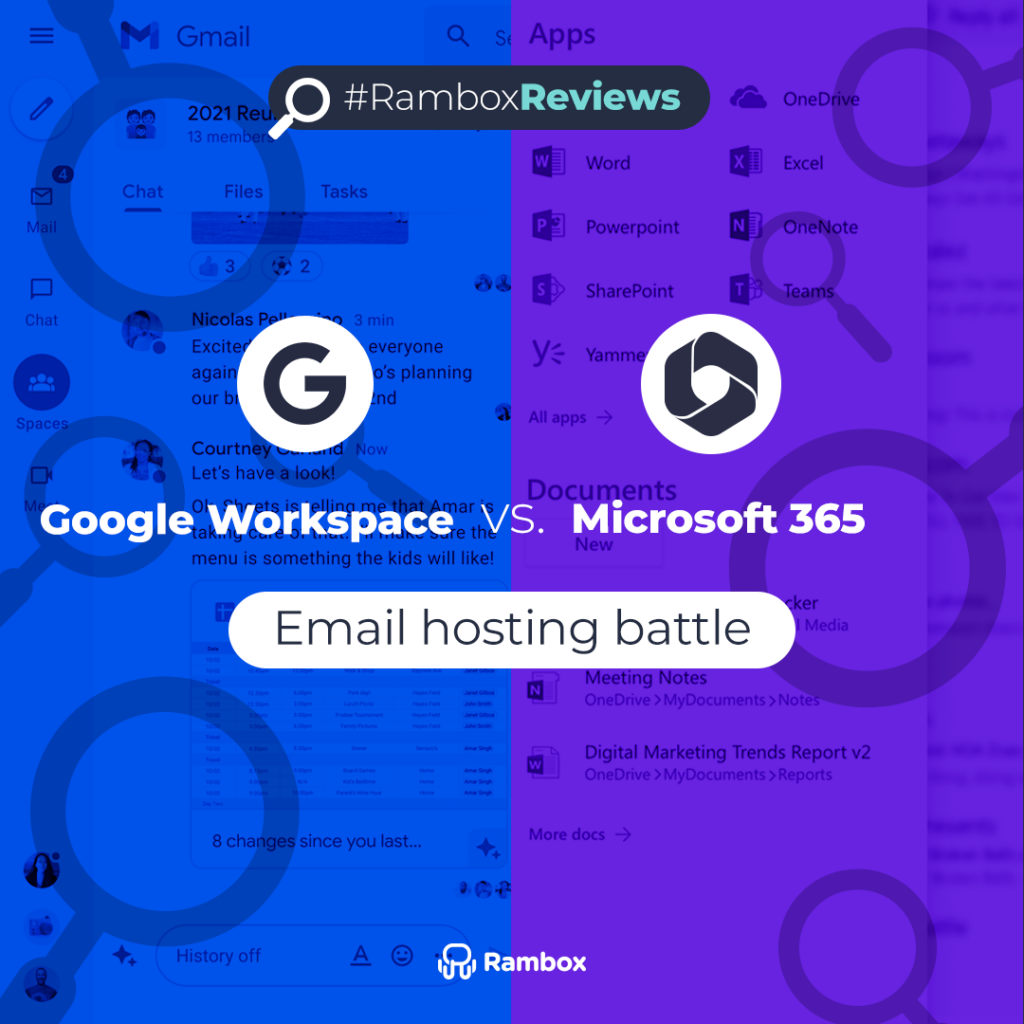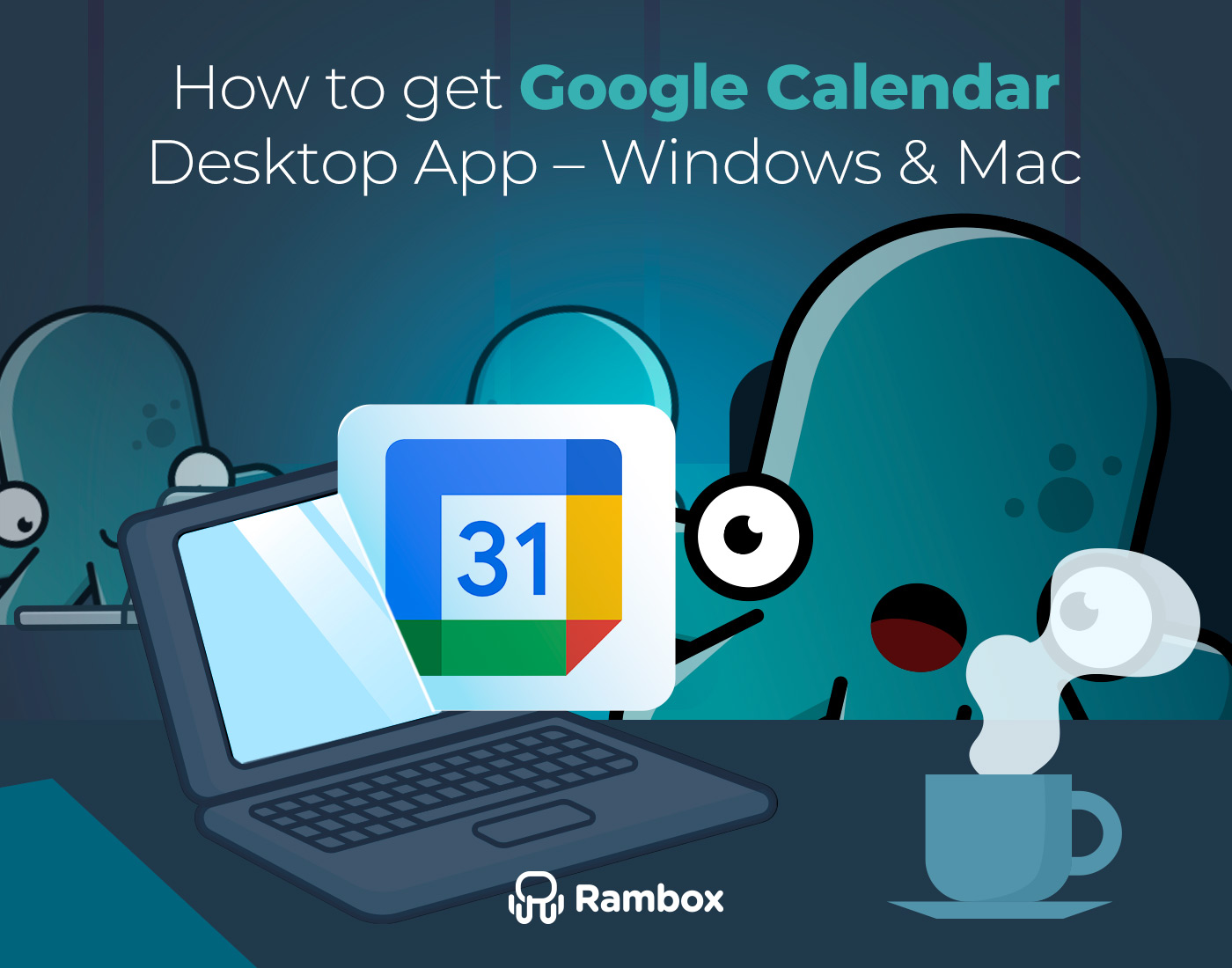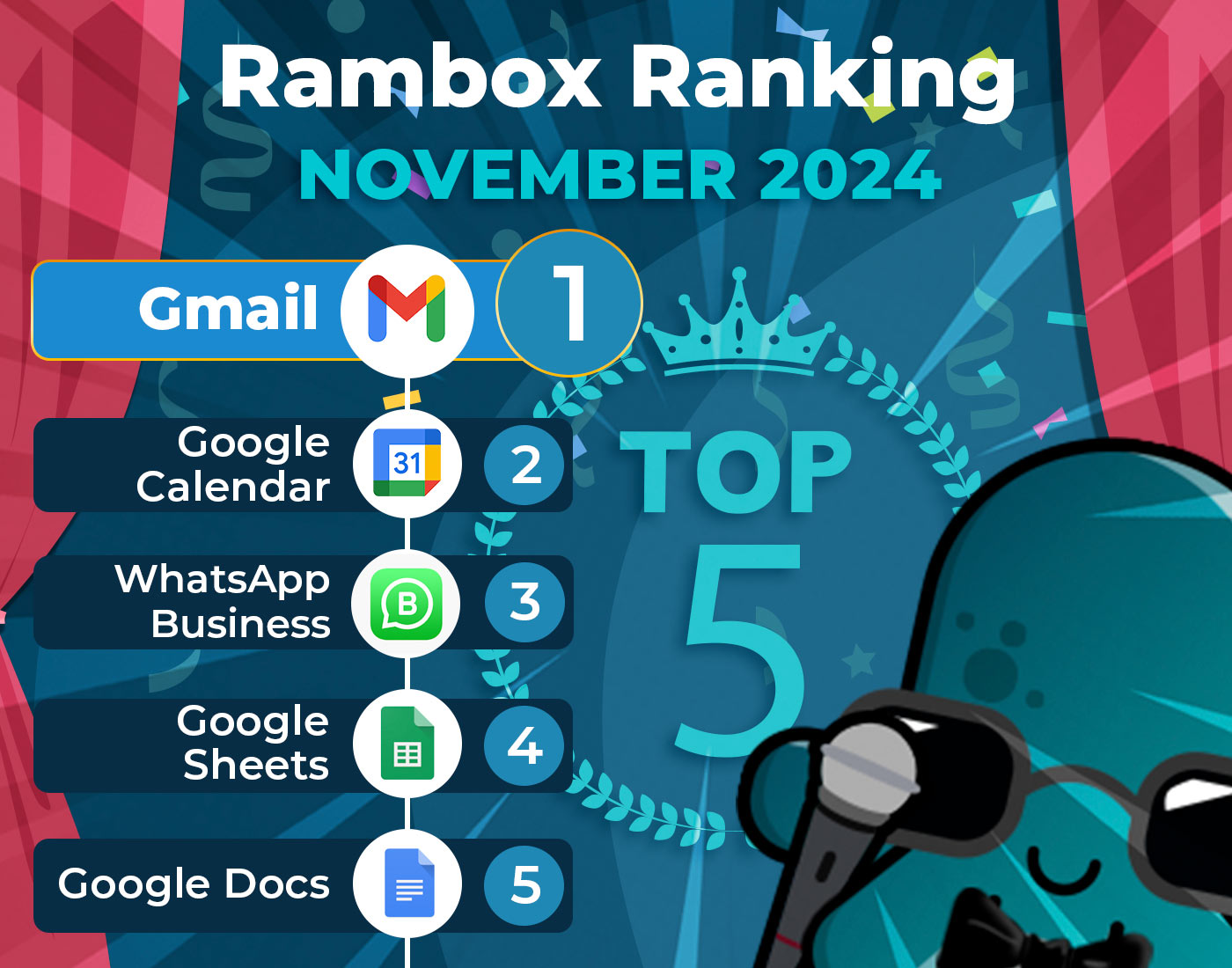When comparing Google Workspace vs Microsoft 365 for email hosting, both are top contenders with unique features.
Whether you’re a business owner, an IT manager, or just looking for a great email service, this guide will help you understand how they stack up. We’ll explain what makes each option stand out so you can easily find the right email solution for your needs.
Contents
- Google Workspace vs Microsoft 365: Desktop apps
- Google Workspace for Email
- Microsoft 365 for Email
- Google Workspace vs Microsoft 365: Pricing
- Google Workspace vs Microsoft 365: Email Service Performance
- Decision Factors
- Use Cases
- Google Workspace vs Microsoft 365 in Rambox
- FAQ about Google Workspace vs Microsoft 365
Google Workspace vs Microsoft 365: Desktop apps
When comparing Microsoft 365 vs Google Workspace, one key difference is their approach to desktop applications. Google Workspace does not offer dedicated desktop apps for most of its services.
Instead, Microsoft 365 provides dedicated desktop applications for its core services, which you can install on Windows and macOS.
If you’re using either Google Workspace or Microsoft 365, Rambox can simplify your workflow by bringing all your apps into one convenient desktop interface.
You can keep everything neatly organized, even if some apps don’t have dedicated desktop versions (This is one of the reasons why using Rambox is the best way to have Gmail app on your desktop).
For instance, if you have multiple Google accounts or use both Google and Microsoft services, Rambox allows you to create separate workspaces for each:
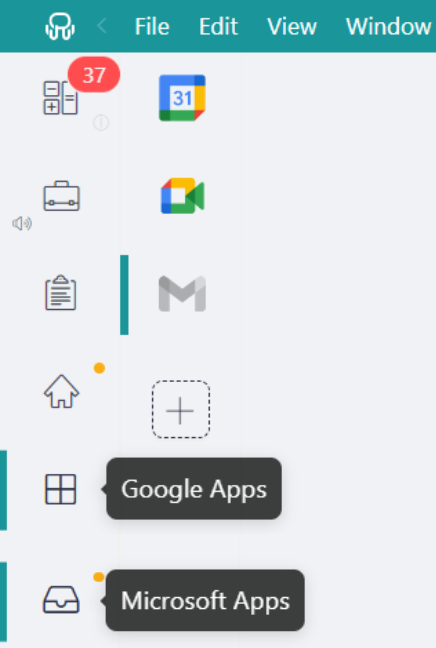
This makes it easy to stay on top of your tasks and access all your tools without the hassle of switching between different interfaces.
Google Workspace for Email
Google Workspace, formerly known as G Suite, is a powerful email hosting and suite office solution offered by Google. It’s designed to provide businesses and individuals with a seamless email experience.
Email Hosting Features
| Outlook: Microsoft 365 uses Outlook as its primary email client, known for its versatility and feature-rich interface. | Email Scheduling: this allows you to schedule emails for future delivery, ensuring timely communication. |
| Custom Email Addresses: Create professional email addresses using your domain (e.g., yourname@yourcompany.com). | Email Handling Rules: empowers users with advanced rules for automating email organization and management. |
| Calendar: equipped with a calendar app, it enables scheduling and managing events, appointments, and meetings with ease. | Out-of-Office Tools: provides automated responses for times when you’re unavailable, maintaining professionalism. |
| Appointment Booking: simplifying meeting planning allows you to set up appointment bookings for seamless coordination. | Automatic Email Forwarding: supports automatic email forwarding to other designated addresses. |
| Chat & Video Calls: Microsoft Teams integration fosters team communication and collaboration with chat and video call capabilities. | Email Aliases: enables email aliases, serving various purposes as needed. |
| Tasks & Appointments: offers convenient tools for efficiently managing duties and appointments, aiding overall organization. | Custom Signatures: offers customization options for creating and personalizing email signatures. |
| Time-saving Features: enhances productivity with features like templates, quick parts, quick steps, conversation management, and shortcut keys. | Custom Views & Sorting: tailors inbox organization through customizable views and sorting preferences. |
| Predictive text: aids in email composition by providing predictive text suggestions and streamlining message creation. | Search Tools: provides robust search tools, making email and information retrieval efficient and straightforward. |
| Dynamic Emails: unlike Gmail, dynamic emails are not supported in this platform. | Third-party Integrations: Like Gmail, it seamlessly integrates with various third-party apps to extend functionality and versatility. |
Pros & Cons of Google Workspace for Email
| Pros | Cons |
| Reliability: Google’s infrastructure ensures high email uptime and reliability. | Learning Curve: While user-friendly, some businesses may require time to adapt. |
| Integration: Seamless integration with other Google Apps like Google Drive, Google Calendar, and Google Meet. | Dependency on Internet: Google Workspace relies on an internet connection. |
| Collaboration: Real-time collaboration on documents and files. | |
| Scalability: Easily add or remove users as your business grows. |
Microsoft 365 for Email
Microsoft 365, formerly Office 365, is a comprehensive email hosting and productivity suite offered by Microsoft.
Email Hosting Features
| Outlook: Microsoft 365 uses Outlook as its primary email client, known for its versatility and feature-rich interface. | Email Scheduling: this allows you to schedule emails for future delivery, ensuring timely communication. |
| Custom Email Addresses: Create professional email addresses using your domain (e.g., yourname@yourcompany.com). | Email Handling Rules: empowers users with advanced rules for automating email organization and management. |
| Calendar: equipped with a calendar app, it enables scheduling and managing events, appointments, and meetings with ease. | Out-of-Office Tools: provides automated responses for times when you’re unavailable, maintaining professionalism. |
| Appointment Booking: simplifying meeting planning allows you to set up appointment bookings for seamless coordination. | Automatic Email Forwarding: supports automatic email forwarding to other designated addresses. |
| Chat & Video Calls: Microsoft Teams integration fosters team communication and collaboration with chat and video call capabilities. | Email Aliases: enables email aliases, serving various purposes as needed. |
| Tasks & Appointments: offers convenient tools for efficiently managing duties and appointments, aiding overall organization. | Custom Signatures: offers customization options for creating and personalizing email signatures. |
| Time-saving Features: enhances productivity with features like templates, quick parts, quick steps, conversation management, and shortcut keys. | Custom Views & Sorting: tailors inbox organization through customizable views and sorting preferences. |
| Predictive text: aids in email composition by providing predictive text suggestions and streamlining message creation. | Search Tools: provides robust search tools, making email and information retrieval efficient and straightforward. |
| Dynamic Emails: unlike Gmail, dynamic emails are not supported in this platform. | Third-party Integrations: Like Gmail, it seamlessly integrates with various third-party apps to extend functionality and versatility. |
Pros & Cons of Microsoft 365 for Email
| Pros | Cons |
| Familiarity: Many users are already familiar with Microsoft Office applications, making the transition smooth. | Cost: While it offers a wide range of features, some businesses may find it relatively more expensive. |
| Integration: Seamless integration with other Microsoft 365 apps like Teams, OneDrive, and SharePoint. | Learning Curve: New users may require time to fully utilize all the features. |
| Security: Robust security features, including threat protection and data loss prevention. | |
| Scalability: Easily scale your email hosting solution to accommodate your business’s growth. |
Google Workspace vs Microsoft 365: Pricing
Both Google Workspace and Microsoft 365 offer different subscription plans:
- Google:
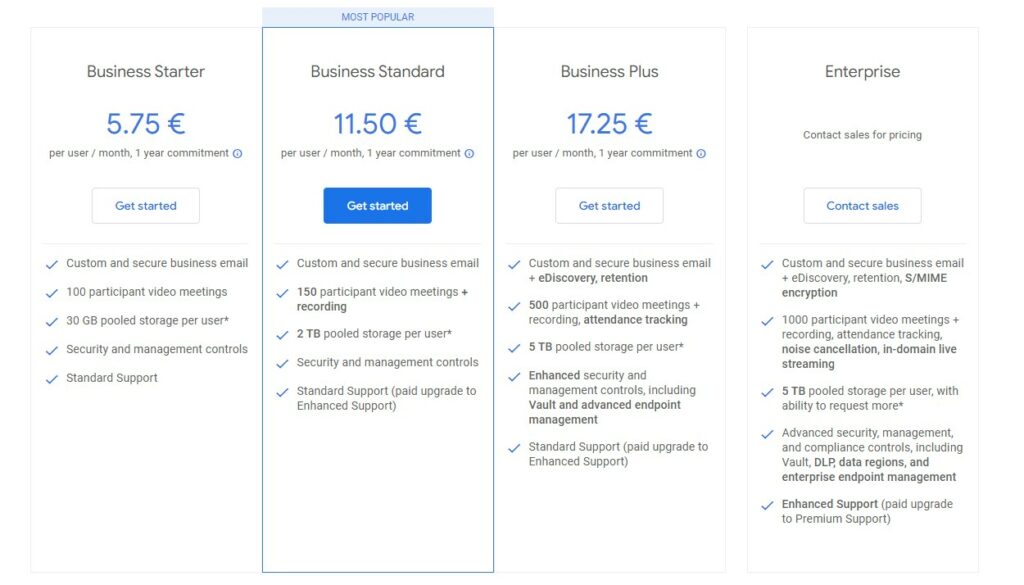
- Microsoft:
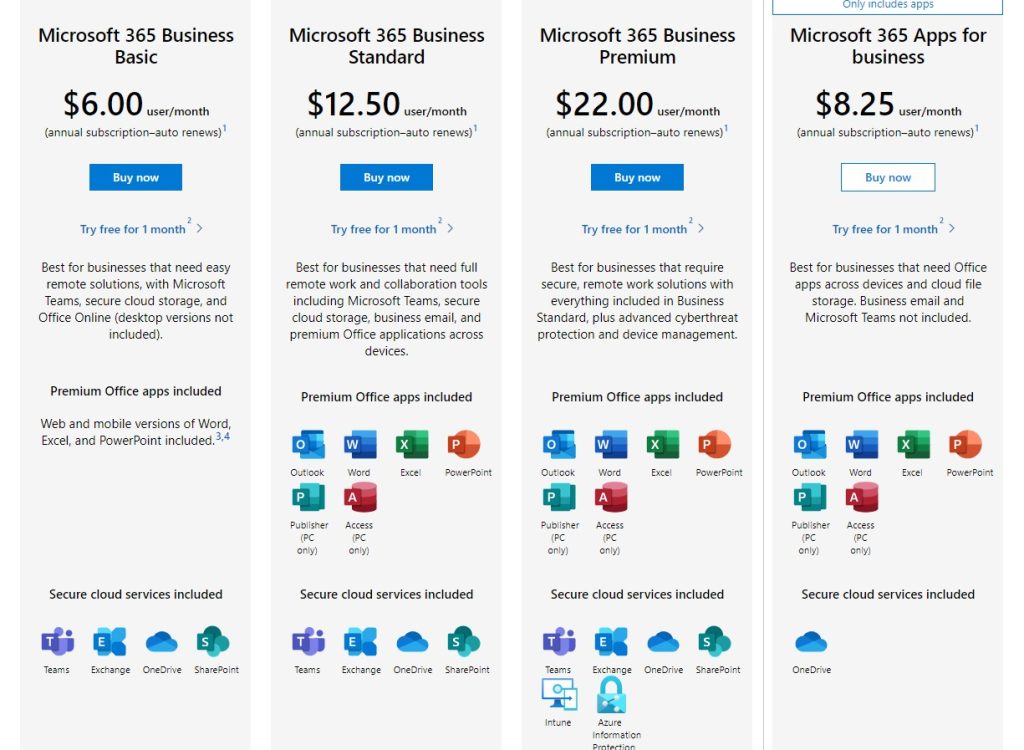
Google Workspace vs Microsoft 365: Email Service Performance
When comparing Google Workspace vs Microsoft 365 for email hosting, both platforms offer strong email service performance with reliable uptime and efficient email retrieval capabilities through Gmail and Outlook.
Competing Google Workspace vs Microsoft 365 in terms of security, both provide robust measures, including AI-driven threat detection, encryption, and multi-factor authentication.
For email storage, Google Workspace typically starts at 30 GB per user, while Microsoft 365 offers a minimum of 50 GB. Both platforms include archiving options.
In terms of email management when discussing how Google Workspace is compared vs Microsoft 365, Google Workspace offers a user-friendly admin console and advanced email organization tools, while Microsoft 365 provides a comprehensive admin center and features like categories and rules.
Your choice should consider specific preferences, existing software ecosystems, and individual organization needs.
Decision Factors
When deciding between Google Workspace vs Microsoft 365 for email hosting, several crucial decision factors come into play.
First, consider your organization’s size and email needs; for instance, a startup with a handful of employees may have different requirements than a multinational corporation.
Next, evaluate the cost structures of both platforms and align them with your budget constraints. For example, while Google Workspace offers cost-effective plans, Microsoft 365 might be more suitable if you require advanced features.
Collect user feedback to gauge the user experience with Gmail or Outlook; some users may prefer the familiarity of Gmail, while others might appreciate Outlook’s integration with other Microsoft tools.
Additionally, consider scalability; if you anticipate rapid growth, ensure the chosen solution can accommodate it by quickly adding or removing users and adapting to changing needs.
Use Cases
This section will explore real-world scenarios and recommend the ideal platform for business needs. We’ll help you find the perfect fit for your email hosting requirements.
Example 1: Startup Tech Company
A newly founded tech startup focused on innovation, and collaboration, needs a reliable email hosting solution to streamline communication among its dispersed team.
- Recommendation: Google Workspace‘s user-friendly Gmail interface and seamless integration with other Google Apps make it an excellent choice for tech startups. Its collaboration tools facilitate efficient teamwork, helping the company stay organized and productive from day one.
Example 2: Law Firm
A law firm handling confidential client information and legal documentation requires a secure and compliant email hosting solution that integrates well with legal case management systems.
- Recommendation: Microsoft 365 offers robust security features, including encryption and advanced threat protection, making it ideal for safeguarding sensitive legal communications.
Example 3: E-commerce Startup
A small e-commerce startup with a limited budget needs an efficient email hosting solution to manage customer inquiries and streamline supplier communication.
- Recommendation: Google Workspace‘s cost-effective plans and user-friendly Gmail interface are budget-friendly startup options.
We hope this comprehensive review of Google Workspace vs Microsoft 365 has helped you choose the perfect provider for you!
Google Workspace vs Microsoft 365 in Rambox
In Rambox, you will be able to work with all Google and Microsoft emails and office applications from a single interface. Here’s how you can add these apps to your main tab or workspaces, you will only have to follow four simple steps.
1. Click on the + icon in your main tab or workspace .
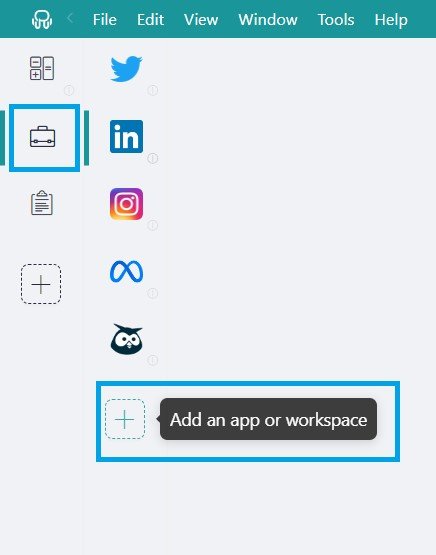
2. Choose which applications you want to add to Rambox. In the options below the search bar (top left), you will find the “suites” with all office applications available.

3. In each category according to the company, you can find all the available applications.
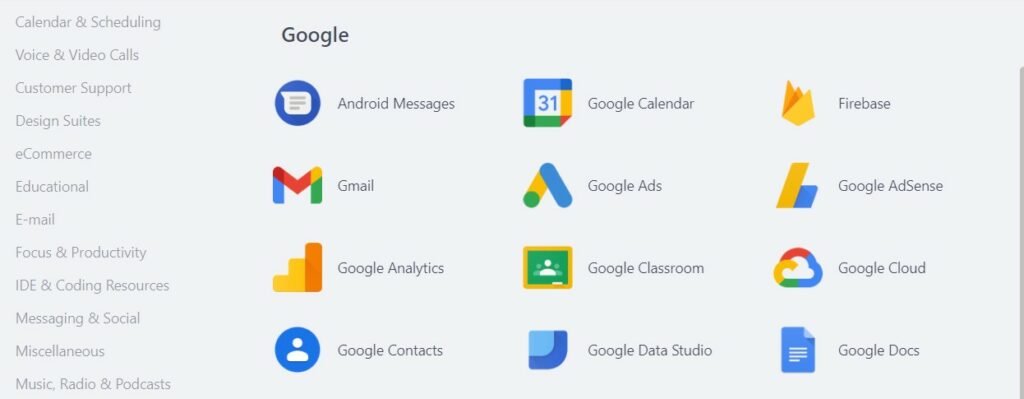
Microsoft
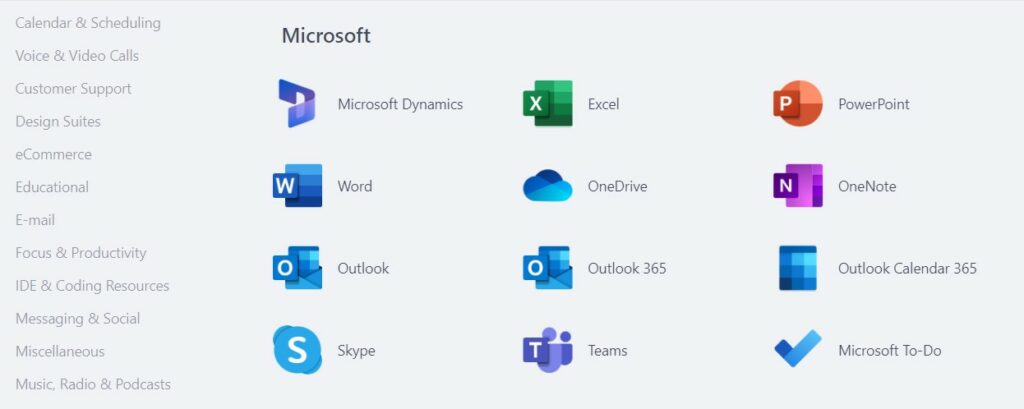
4. Choose the application you want to add to your workspace and click on the “+ add” button to add it.
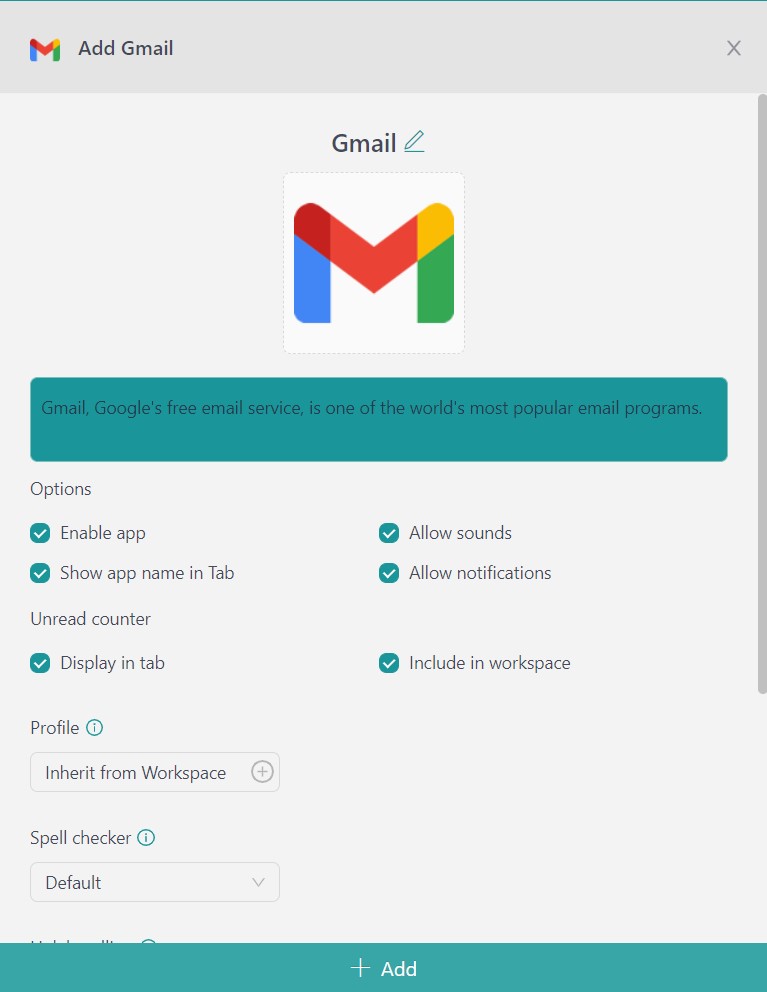
That’s it! You can now work with the applications you want, all on the same desktop and in an organized way. Choose which profile you want to use in your apps, how you want the app notifications to be, if you want the apps to go into hibernation mode after a specific time and much more! Remember that Rambox allows you to adapt your applications to your needs, so configure it to your liking.
If the number of applications you work with overwhelms you, and you can’t optimize your time and resources, try Rambox for free. Just download the program and enjoy its features. No cards, no cheating, it’s that simple!
FAQ about Google Workspace vs Microsoft 365
What are the main differences in email features between Google Workspace and Microsoft 365?
Google Workspace’s Gmail offers a simple, intuitive interface with smart features like predictive text and dynamic emails, which let you interact with content directly within your inbox. Microsoft 365’s Outlook provides advanced organizational tools, like customizable rules and extensive search capabilities. If you value a clean, user-friendly experience and real-time collaboration, Google Workspace might be preferable. If you need advanced email management and powerful search features, Microsoft 365 is a stron
Are there any major differences in email service performance between Google Workspace and Microsoft 365?
Both Google Workspace and Microsoft 365 provide reliable and robust email services. Google Workspace offers a clean, intuitive interface with strong integration across Google’s ecosystem. Microsoft 365 delivers a powerful email experience through Outlook with extensive customization and integration options. Both platforms ensure high uptime and security, but your choice might depend on your preference for interface and additional features.g contender.
Can I easily switch between Google Workspace and Microsoft 365 for email?
Switching between Google Workspace and Microsoft 365 is possible but can be complex. It involves migrating your emails, contacts, and calendars from one platform to the other. There are tools and services available to help with this process, but it’s a good idea to plan carefully and possibly seek assistance to ensure a smooth transition.
